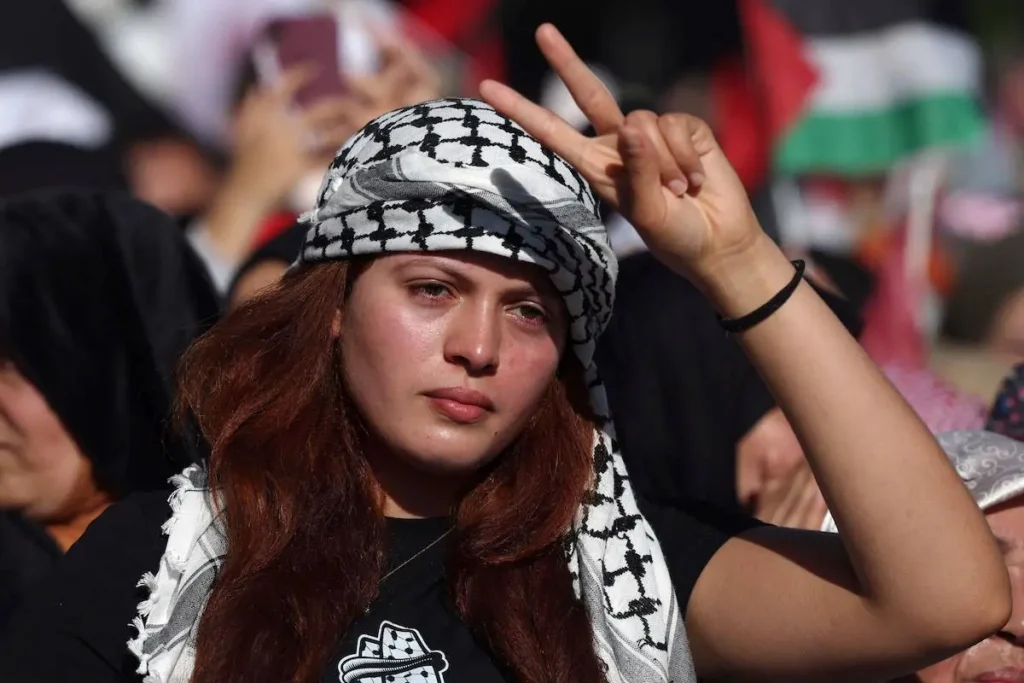Introduction
The term “kuffeye,” often spelled as “keffiyeh,” refers to a traditional Middle Eastern headdress typically worn by men. This distinctive garment is not only a fashion statement but also holds significant cultural, historical, and practical importance across various regions, particularly in the Arab world. In this article, we will explore the origins, styles, symbolism, and modern relevance of the kuffeye.
Origins and History
It has deep historical roots, with evidence suggesting that similar head coverings have been worn in the Middle East for thousands of years. Originally made from cotton or wool, it served a functional purpose, providing protection from harsh weather conditions such as sun, wind, and sand.
The modern kuffeye as we know it today became popularized in the 20th century, particularly during the Palestinian struggle for identity and statehood. It became a symbol of resistance and solidarity among Palestinians and others in the Arab world. The pattern, usually checkered, is often associated with Palestinian nationalism, especially when worn by leaders like Yasser Arafat.
Styles and Variations
It comes in various styles and colors, each with unique regional significance. The traditional black-and-white or red-and-white patterns are the most recognized. The black-and-white kuffeye, known as “Keffiyeh ” is commonly worn in Palestine, while the red-and-white variation is often associated with Jordan and Saudi Arabia.
Different regions have their own variations in terms of fabric, size, and wearing style. For instance, in Iraq, it is sometimes larger and used more as a scarf, while in Gulf countries, it may be worn as part of traditional attire alongside a agal.
Symbolism and Cultural Significance
Beyond its practical uses, it carries deep cultural and political symbolism. In many Arab countries, it represents resistance to oppression and the fight for autonomy. The act of wearing a kuffeye can evoke strong feelings of national pride and solidarity among individuals, particularly in times of political strife.
The kuffeye has transcended its original context and has been adopted in various forms across the globe. It is often worn by activists and supporters of the Palestinian cause, serving as a visual statement of solidarity.
In fashion, it has gained popularity beyond the Arab world. Designers have incorporated its patterns into their collections, and it has been embraced by celebrities and influencers. However, this appropriation has raised questions about cultural sensitivity and the commercialization of a symbol with profound meaning.
Practical Uses
It is not just a cultural icon; it has practical applications as well. Its lightweight fabric makes it an ideal accessory for outdoor activities, offering protection from the sun and dust. Bedouins have historically used the kuffeye to shield their faces from sandstorms while navigating the desert.
In modern contexts, the kuffeye is often employed as a versatile garment. People use it as a scarf, face cover, or head wrap during outdoor sports, hiking, and other activities. The kuffeye design allows for multiple styles of wrapping, making it a functional piece in various environments.
Controversies and Modern Context
The kuffeye has not been without controversy. In some Western countries, wearing a kuffeye can be seen as a political statement, often leading to misunderstandings and conflicts. While some view it as a symbol of resistance and unity, others may perceive it as a contentious political statement.
This duality has sparked discussions about cultural appropriation, particularly when fashion brands adopt the kuffeye without acknowledging its significance. Critics argue that this can dilute the garment’s meaning, reducing it to a mere trend without understanding the historical and political context behind it.
Global Influence and Adaptation
As globalization continues to shape cultural exchanges, the kuffeye has found its way into various fashion and artistic expressions worldwide. From runway shows to street style, designers have experimented with its patterns and styles, often blending it with contemporary aesthetics.
This global influence can be seen in the works of artists and designers who use the kuffeye imagery to convey messages of resistance and identity. By adapting this traditional garment, they create a dialogue about cultural heritage, politics, and the shared human experience.
Conclusion
The kuffeye is much more than a piece of fabric; it is a rich symbol of cultural identity, historical significance, and practical utility. Its journey from a utilitarian garment to a powerful political symbol and fashion statement reflects the complex interplay between tradition and modernity. As the world continues to change, the kuffeye remains a vital part of the cultural fabric of the Middle East and beyond, embodying resilience, identity, and solidarity.
In navigating its multifaceted meanings, it is essential to approach the kuffeye with respect and understanding, recognizing its significance to those who wear it. Whether as a fashion accessory or a political statement, the kuffeye serves as a reminder of the enduring power of cultural symbols and their ability to unite people across different contexts.

